It's An RGB Disco: The GIGABYTE X299 Gaming 7 Pro Motherboard, Reviewed
by Joe Shields on January 26, 2018 8:00 AM EST- Posted in
- Motherboards
- Gaming
- Intel
- Gigabyte
- AORUS
- RGB
- X299
- Basin Falls
- Skylake-X
- Gaming 7 Pro
BIOS
Our first glimpse of the Gigabyte BIOS brings us to the "Classic" style BIOS. Upon entry, useres are placed in the M.I.T (Motherboard Intelligent Tweaker) section. This fairly uninformative first screen is where users will dive into system changes from frequency, memory, and voltage settings, to PC Health Status and Smart Fan 5 settings. Other motherboard manufacturers boot into a status screen-like environment, with system information on it, or into an Easy Mode first, but this board does not and drops the user right in the middle of it.
The BIOS still has an easy mode, via a mouse click on the bottom menu or by pressing F2. With this, we are now able to see system information from temperatures, voltage, DRAM Status, Boot order, fan profiles, and an area to adjust attached fans via Smart Fan 5 options.
Within Easy Mode is an EZ OC section with settings for Normal (default), Performance, and Saving. The performance mode raises the turbo boost clocks a couple of bins on each set of cores. So two threads will run at 4.7 GHz (from 4.5), While all core boost is raised to 4 GHz.
Back into the classic mode, and inside the Advanced Frequency section are options to edit BCLK, CPU and Memory Multiplier as well as XMP settings. Inside the Advanced CPU Core settings are more options such as per core overclocking, AVX offsets, as well as power limit, C-State, and other CPU adjustments. While most of what is needed here on this screen, I would have liked to see voltage adjustments here as well so it is a bit easier to adjust everything from one screen.
Within the Advanced Memory Section are all the options needed to adjust memory. We again see the XMP option and memory multiplier but now it is surrounded by other options for memory timings/sub timings adjustments and memory enhancement features.
Once in Advanced Power settings, we are greeted by another set of sub-sections for CPU Core, Chipset, and DRAM Voltage control. The Advanced Power Settings sub-heading is where users will find LLC control if needed. Each section handles its own domain with the Core Voltage controlling VCore, Mesh, VRIN, VCCIO, and PLL voltages for the CPU. The Chipset heading has one option in it for the chipset voltage (PCH Core) while the DRAM Voltage section has options for each channel and its termination voltage. This is a section I would like to see condensed into one for ease of use. Users shouldn't have to have a section for each voltage/domain.
The System Section across the top holds information about the board and its BIOS version, System Date/Time, and default language.
The BIOS heading supplies users with information on boot such as displaying the logo, boot options, fast boot, and other boot-related functions including Fast Boot and PXE boot among other boot-related options.
The Peripherals section is where adjustments to USB, SATA, the LAN Controller and Network Stack, and LEDs are found. These modes can be changed or enabled and disabled from within this section.
The Chipset section users will find controls for VT-d and VMD technology as well as the audio and PCH LAN controller in case those needed disabled.
The Power Section is where users have control over anything power on/off related including adjustments for how the power button behaves, and what the PC will do after power loss (AC BACK).
The Save and Exit Section is where users are able to load optimized defaults, override the set boot device (for one reboot), as well as an option to save and load BIOS profiles.
All BIOS screens are found in the gallery below.
Software
The driver disk includes all the drivers needed and software which GIGABYTE provides. Users are able to 'Xpress Install' all or select each item to be installed. All drivers were installed from the disk successfully. Also included on the disk are additional applications including the App Center, a central location for Gigabyte Software, and the dozen or so pieces of software it offers. We have installed the @BIOS software, Easy Tune, Gigabyte HW OC App (phone based monitoring and overclocking), the RGB Fusion application, as well as a Smart Backup program to backup the system in case of failure.
The GIGABYTE App Center is a piece of software designed to organize all the applications they have to offer. There are over a dozen different selections ranging from BIOS flashing, overclocking, RGB LED, and even backups. The App Center runs on startup and is accessible from the tray icons in the bottom right corner. The App Center is a useful place to consolidate the many different programs they offer for this motherboard.
Below is a screenshot of the @BIOS application which allows users to identify the BIOS details such as the version, flash type and size, as well as the vendor. The app allows users to flash their BIOS from a file or pull the latest from the website. I always like to flash the BIOS from the BIOS itself, but, these types of applications have made their way to the mainstream it seems. I was unable to test out the functionality as the board came equipped with the latest (and only) BIOS currently out for this motherboard.
Next is the Easy Tune software, which is GIGABYTE's monitoring and overclocking application for Windows. This software monitors all the major voltages and settings across the bottom and depending on which tab is open, determines what is displayed. In the case of Smart Boost are overclocking it lists preset options for overclocking, as well as an auto-tuning function. The Advanced CPU and Advanced DDR tabs list options for overclocking the CPU and adjusting RAM timings. I did not touch the RAM selections (I prefer to do that from the BIOS) but played with the CPU multiplier and voltage without issue.
The Killer Control Center app is used to monitor and make changes to the Killer LAN port on the board. It allows to set limits on speed, prioritize traffic to improve latency, and a Wi-Fi Analyzer.
GIGABYTE's take on software control of their RGB LED ecosystem is named RGB Fusion. This application controls how the RGB LEDs act, or react, on the board. Pictured below is the basic tab where we see nine different preset patterns to choose from. The Advanced section gives even finer-grained control over each of the zones while in the Intelligent tab colors can be attached to a number of different events such as CPU temperature or use, CPU fan, via a schedule, and others. RGB Fusion has a lot of options for controlling system lighting and achieving the right lighting scheme for any user.
In addition to the Realtek software for control over the audio, Gigabyte has Sound Blaster Connect to control 3D effects as well as the sound itself through an equalizer. With the BlasterX Experience, users can setup specific sound environments for each activity or game.


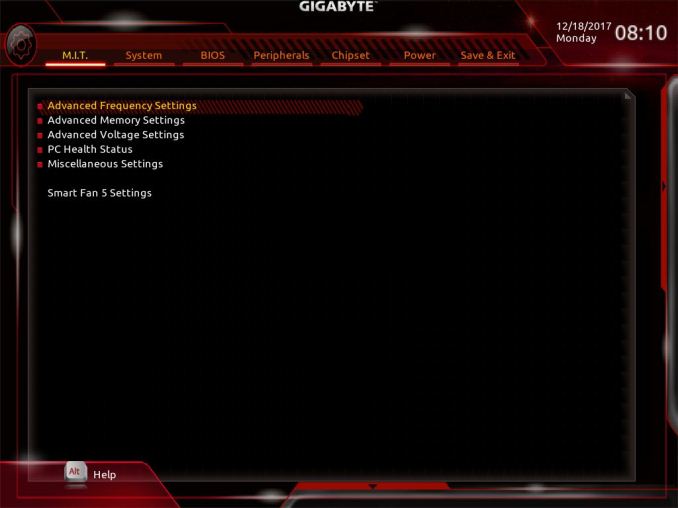
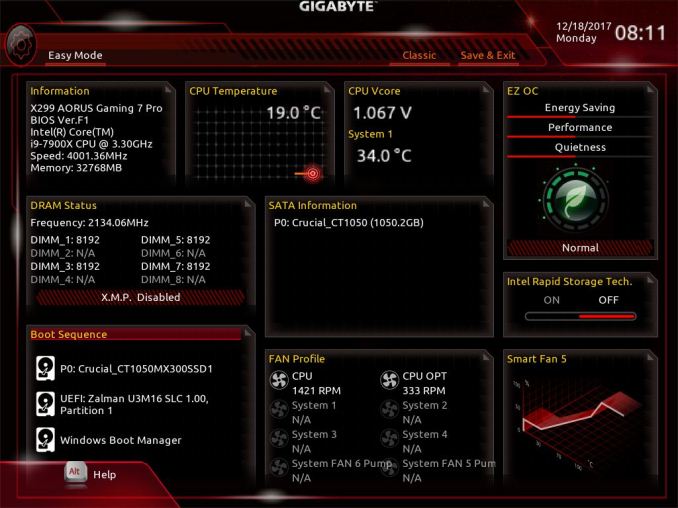
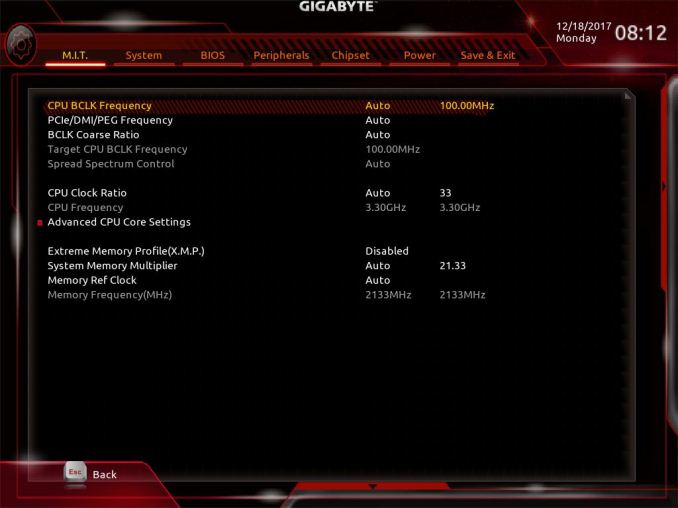
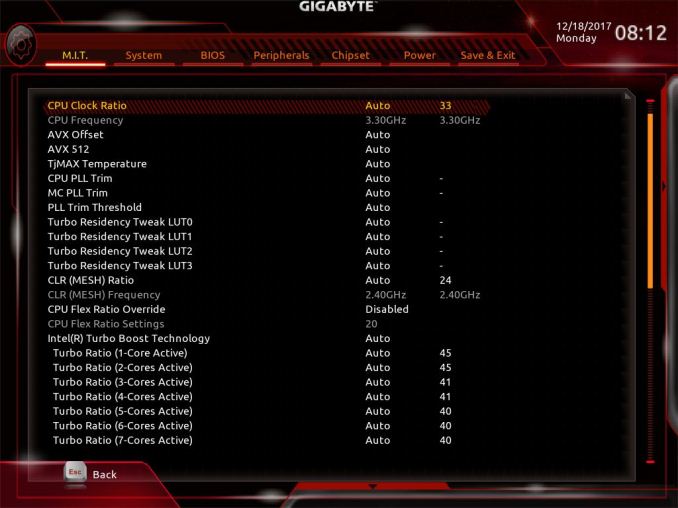
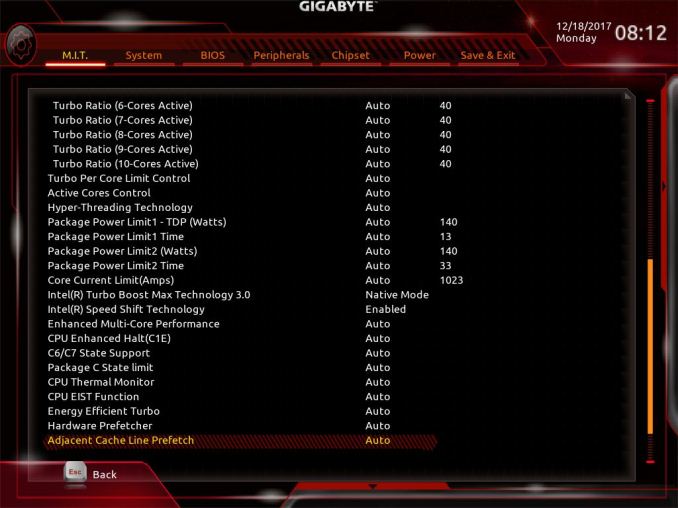
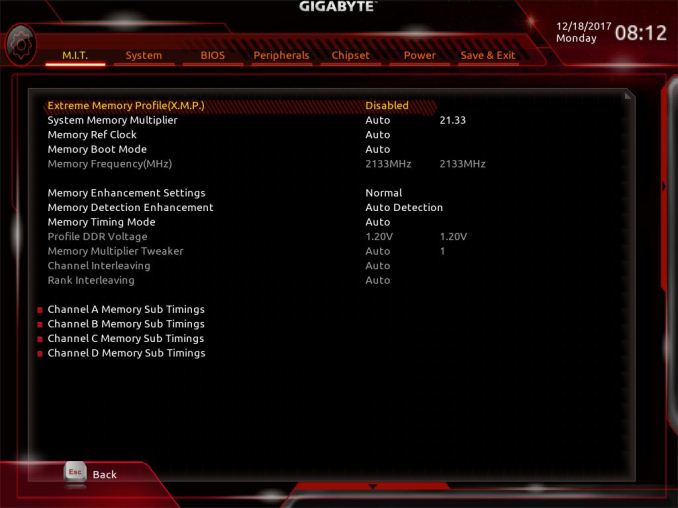
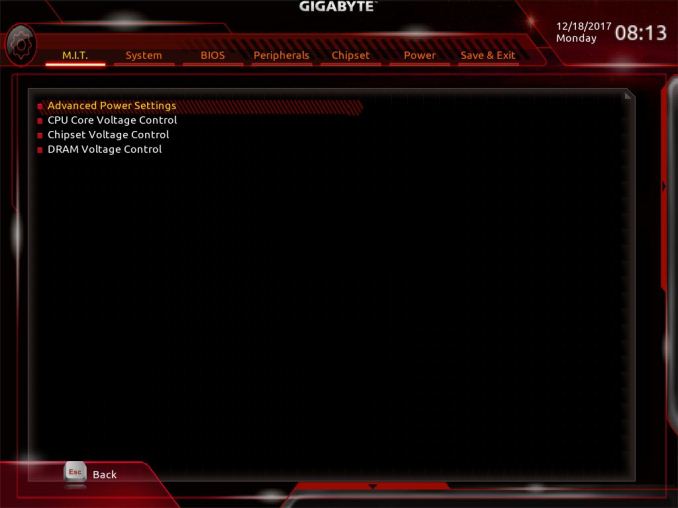
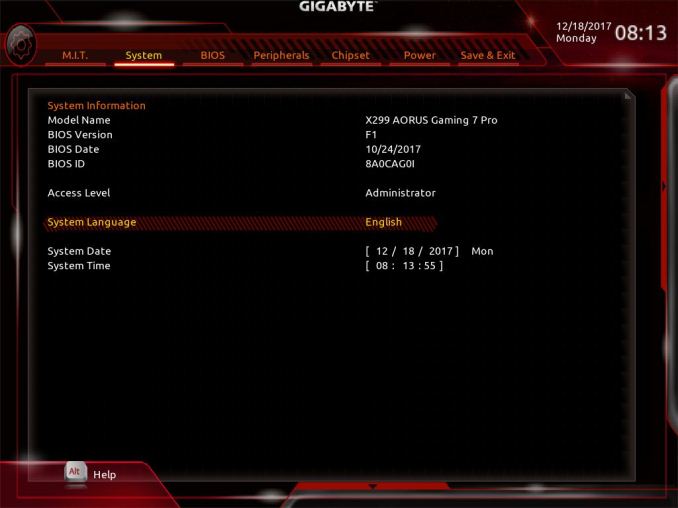
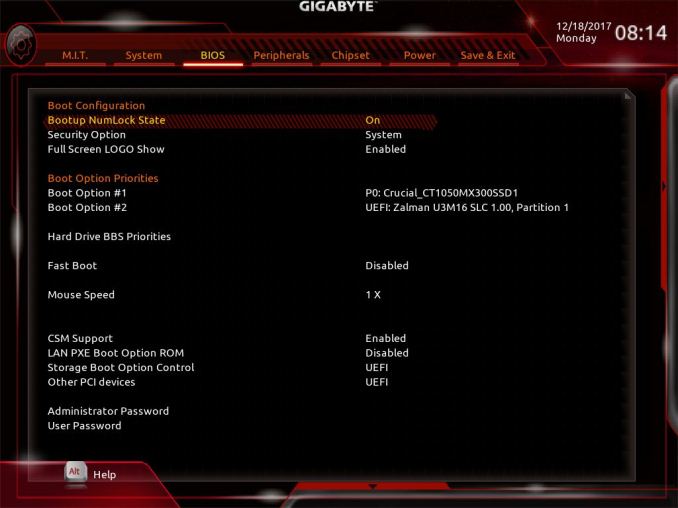
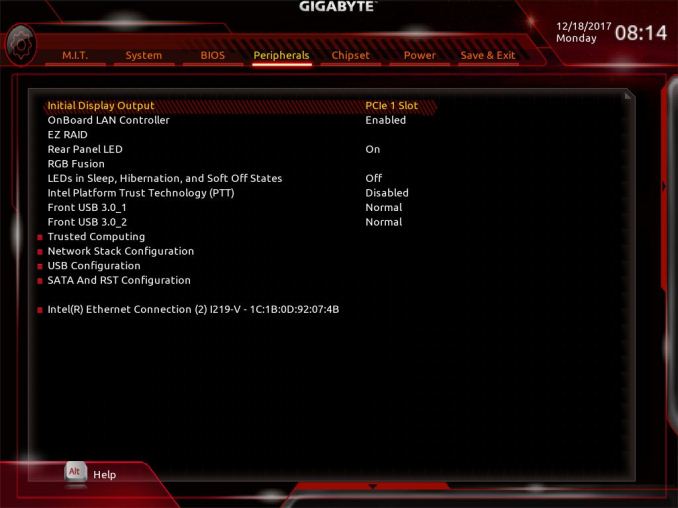
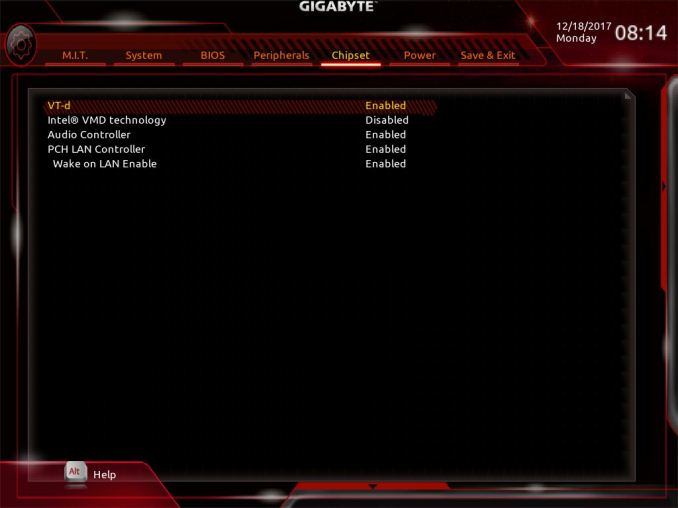
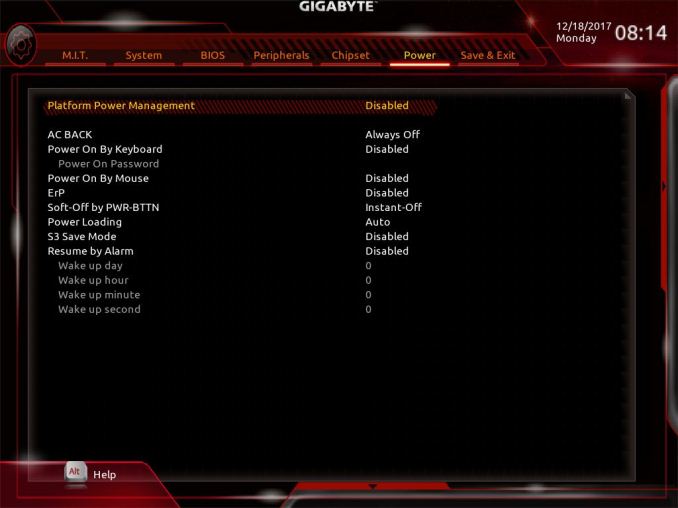
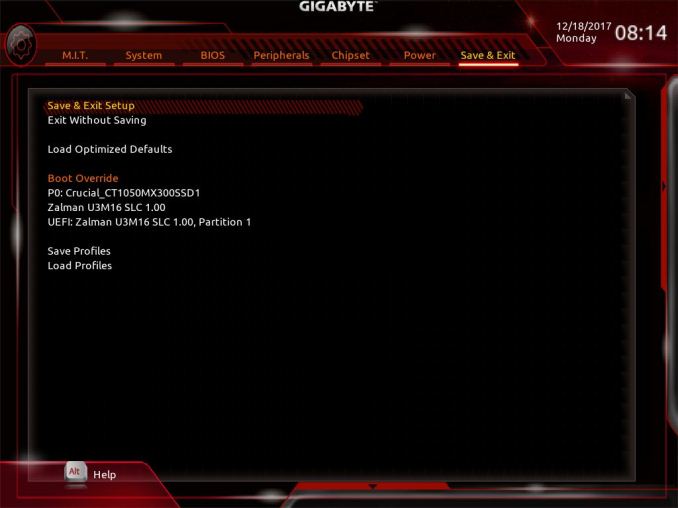








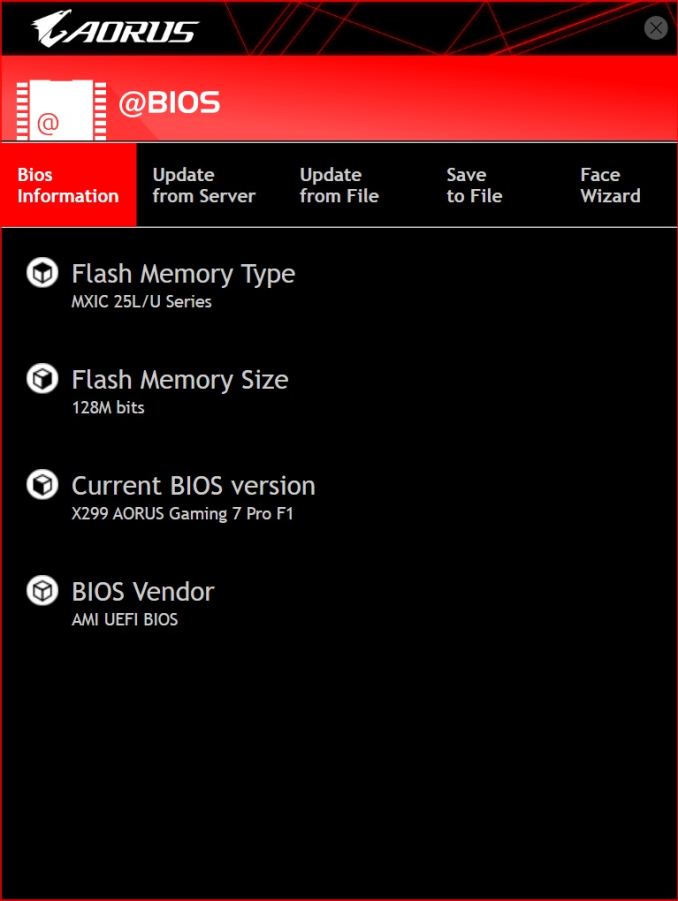
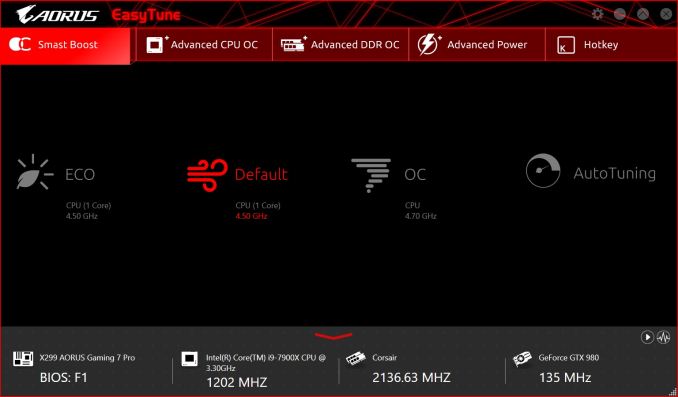
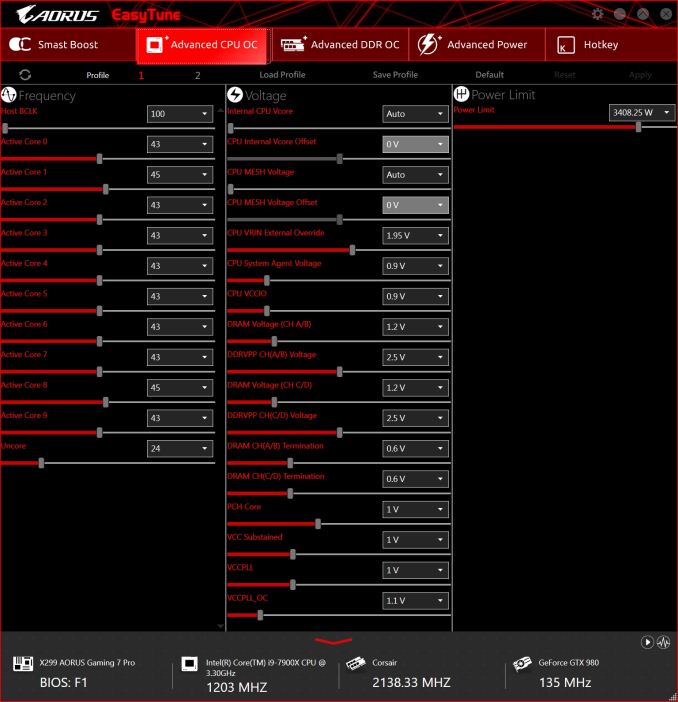
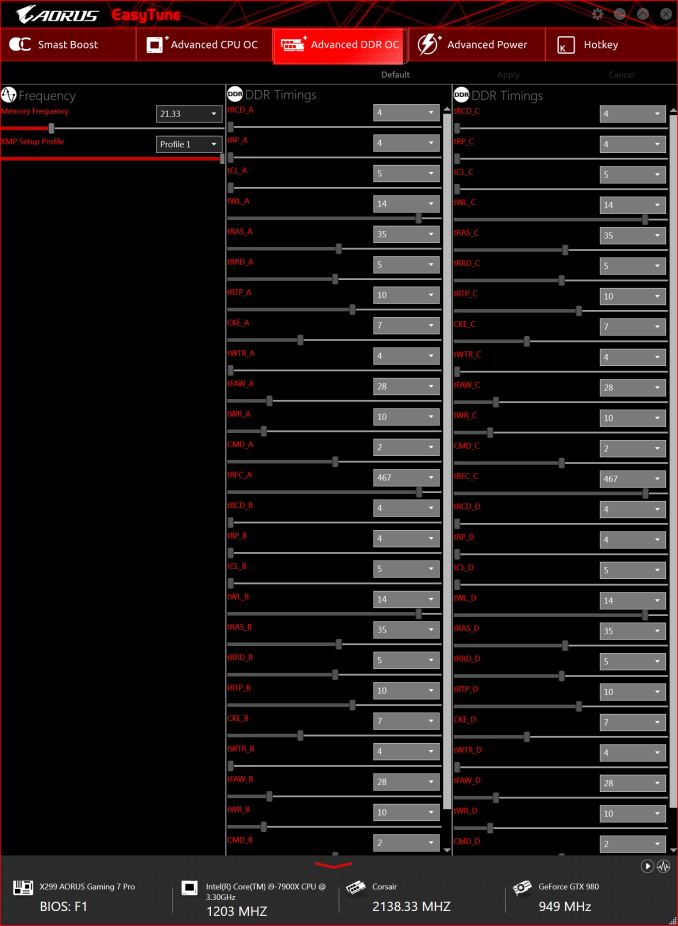
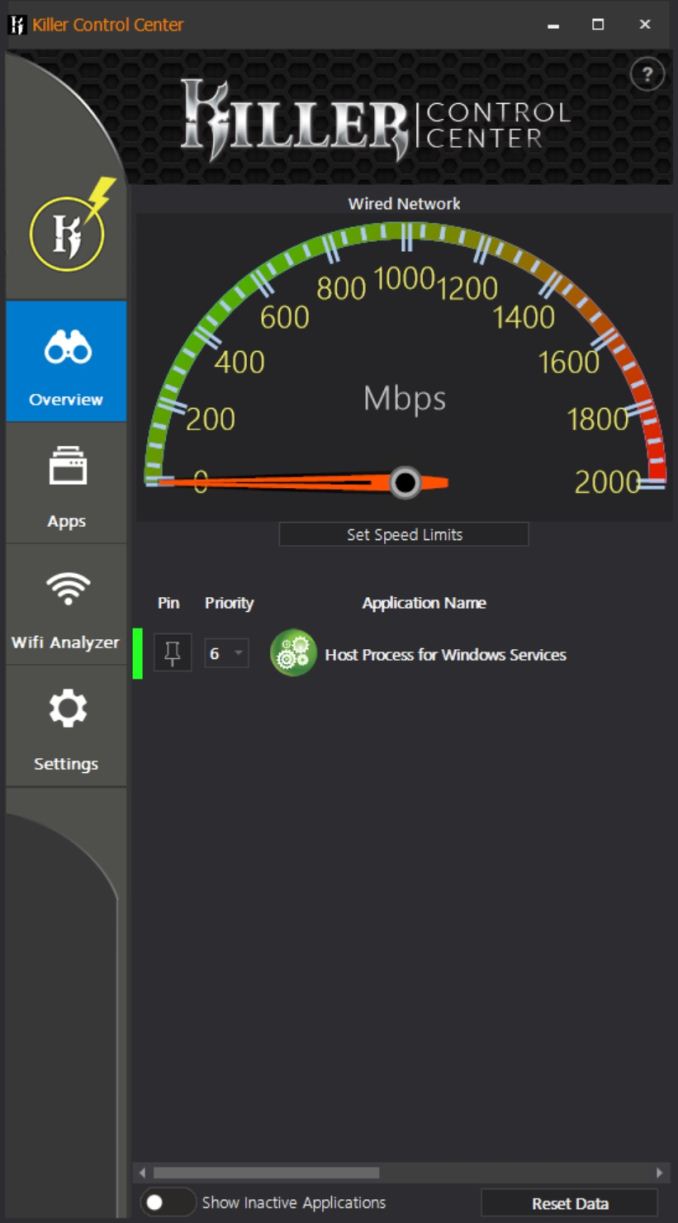
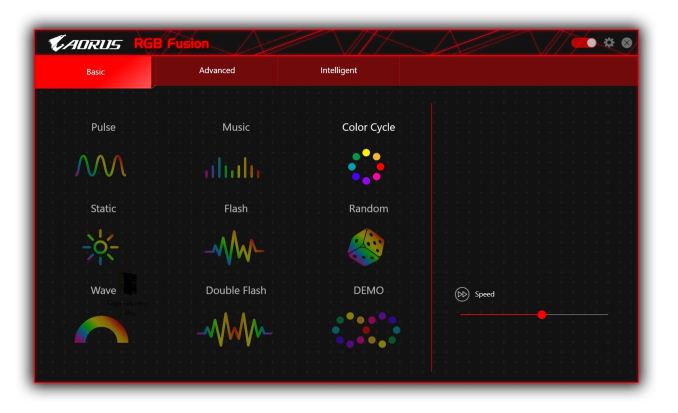
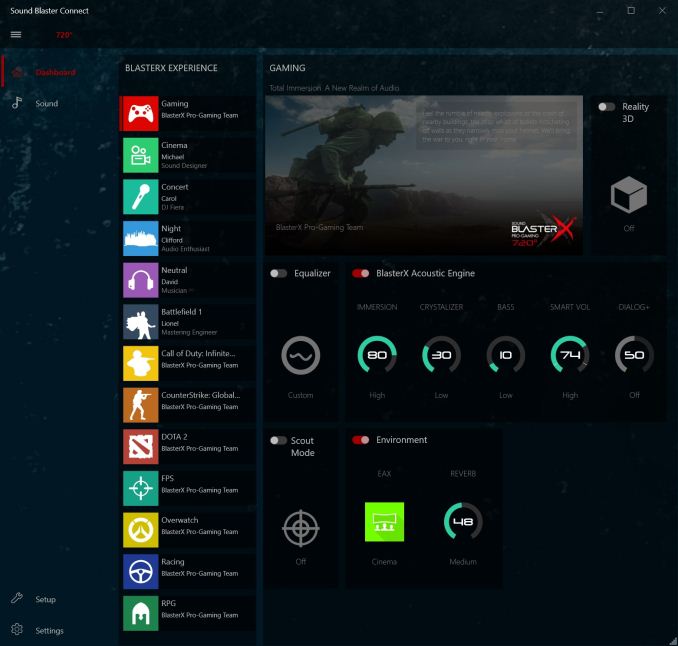








29 Comments
View All Comments
Lord of the Bored - Saturday, January 27, 2018 - link
You misunderstand. It isn't about whether it inconveniences or affects them in any way. It is about needing a reason to bitch about something.WinterCharm - Thursday, February 1, 2018 - link
> adds next to no priceCitation needed.
timecop1818 - Friday, January 26, 2018 - link
Fucking killer NIC. That shit cannot die soon enough. Why even waste space on that, even 10GbE and an intel 1GbE would make more sense.I was looking at Gigabyte boards a bit ago and anything with decent features was ruined by KillerShit, so I switched to ASUS for PRO/A series without dumb shit thrown in.
Ian Cutress - Friday, January 26, 2018 - link
I'll forward your concerns to Rivet. Anything specific you don't like about Killer, especially the latest hardware?PeachNCream - Friday, January 26, 2018 - link
Hey Ian, since Joe has the hardware already, is it possible for Anandtech to do some more in-depth benchmarking of the Killer ethernet and wireless cards on this motherboard? Internet gaming tests under real world conditions might help us put Killer's value proposition into perspective.oRAirwolf - Friday, January 26, 2018 - link
I agree with peachncream. Killer has made some absolutely awful networking products in the past that were further crippled by their horrendous drivers and unnecessary software. It has left a bad taste in everybody's mouth and very few if any PC enthusiasts are happy to see their products in a motherboard. From what I see online, it seems as though most people either don't install their software or uninstall it if it comes pre-packaged. Rather than forwarding complaints to deaf ears at Rivet Networks, it would make a lot more sense to do some very detailed benchmarking, including Aquantia's new chipsets, showing the pros and cons of each solution and the impact they have on things like latency, CPU usage, bandwidth, and game perfomance. I am especially interested to see some benchmarks pitting the new Aquantia chipsets against Intel's 10gbe offerings like the X540, X550, and X710 with RJ45 ports.Notmyusualid - Saturday, January 27, 2018 - link
I disagree.There is nothing wrong with their hardware in my opinion.
Just install the basic driver, or the Qualcomm driver, and you will be unable to tell the difference from your typical Intel NIC, on any consumer device. You don't have to install their network suite.
Meanwhile I've had no end of trouble with my X540 10Gb/s NICs. So much so - I returned it for replacement. And whilst I've not been home yet to try the replacement, I'm not confident of good results.
HobartTas - Saturday, January 27, 2018 - link
Hello Ian from Australia! I signed up just now to reply to your question to timecop1818 and I'll give you my impression of previous killer standalone $200 network cards and their embedded chipset Ethernet products. Basically the product is of no real benefit over any other networking product and in one specific case I'll mention later on completely useless. It supposedly originally prioritized gaming packets within the machine over other traffic which might have been of some use at a lan event where you bring your own machine but then you probably wouldn't be using your machine for anything else at the time so gaming traffic was probably all that was going out over the network anyway, so no benefit there and these days most people do their gaming over the internet anyway.When I only had 8/1 Adsl1 and (max speed) 12/1 Adsl2 available for internet the same would apply as you couldn't do anything else because even if you downloaded other stuff at say 50% of Adsl download speed the 50 byte acknowledgement packets going out to request the next packet be sent down to you would blow out pings from 40-60 to 200 as the upload speed of 1 Mbit was just way too slow and congestion occurred (think goat track compared to 8 lane freeway) so again I'm left with just gaming traffic only because I couldn't do anything else so no benefit over any other ethernet chipset again.
Now that I'm on fibre at 100/40 and I have a truckload of bandwidth I can be gaming and also downloading Nvidia drivers at 11 MB's and gaming pings only slightly rise from 22 to 26 so killer is not needed at all again as any other Ethernet chipset will do just fine.
Software: According to their website https://www.killernetworking.com/driver-downloads it's windows only and nothing else. I have a 4930K and a Gigabyte X79S-UP5-WIFI board which has both Intel and Realtek ethernet connectors on it and that's my Windows 7 gaming machine. My other identical board has an I7-3820 cpu and I'm testing Solaris 11.3 as a ZFS NAS and for whatever reason the Intel Ethernet connector came up as "mis-configured" and I couldn't work out why that was so I plugged in the network cable into the other Realtek connector and off I went. If I had a killer ethernet instead of Realtek I'd either have to figure out the Intel mis-configuration or get another Gbe network card (probably Intel) and plug it in as Killer have no Solaris, BSD or Linux drivers which is pretty useless of them.
For those people who find that Gbe isn't fast enough and are looking at 10Gbe that's not expensive the speed increase stated on their webpage https://www.killernetworking.com/products/killer-e... going from 940 Mbs to 1102 Mbs may as well be totally insignificant as all it is is just re-inventing the existing wheel. I picked up about a year ago very cheap (approx USD$ 50) Mellanox QDR infiniband cards when they deprecated the technology and these cards are 40 Gbs Infiniband/10 Gbs Ethernet capable so if this chipset actually was 100 Base T (or even 50 or 25) then and only then would I possibly be interested as probably would other people as well.
No one wants to muck around with a "control center" for Ethernet as I just want the network to "just work" when I plug the cable in and I'm happy with some crappy no-name no-brand software TCP/IP stack that works reliably even if it only goes at say 90% of maximum speed. I hope its not anywhere near as useless as the Nvidia Firewall software I once had the misfortune to install as it completely stuffed up my network port and rendered it non-functional which still didn't work even after I uninstalled the software and I had to reformat the hard drive and re-install windows to fix that problem.
Anyway that's everything that's CURRENTLY wrong with this product and nothing that's right with it as I have explained in detail above, If they posted drivers for all the other OS's then it might get half way to being merely usable. Feel free to pass my entire comment over to Rivet and I look forward to any reply to any part of my comments posted back here but I'm not holding my breath in anticipation of that.
Cheers
Strunf - Saturday, January 27, 2018 - link
They are the answer to a non existant problem... or better the real problem is the Internet speeds people have and there's nothing Killer can do about it. People that have slow internet already turn off any sharing software when they play games and those that have a fast one don't care cause they have more than enough, those in-between will just turn off any bandwidth hungry apps just for a piece of mind.On bittorrent if you share at a very slow speeds, as would be the case if you play and torrent at the same time on a slow connection no one will connect to you or kick you if the speeds are too low, no one wants to spend time and resources on a connection that is as fast as a snail.
Tamz_msc - Friday, January 26, 2018 - link
From what I have read recently Killer LAN is mostly fine as long as you don't install their software. Linux support might be spotty though.